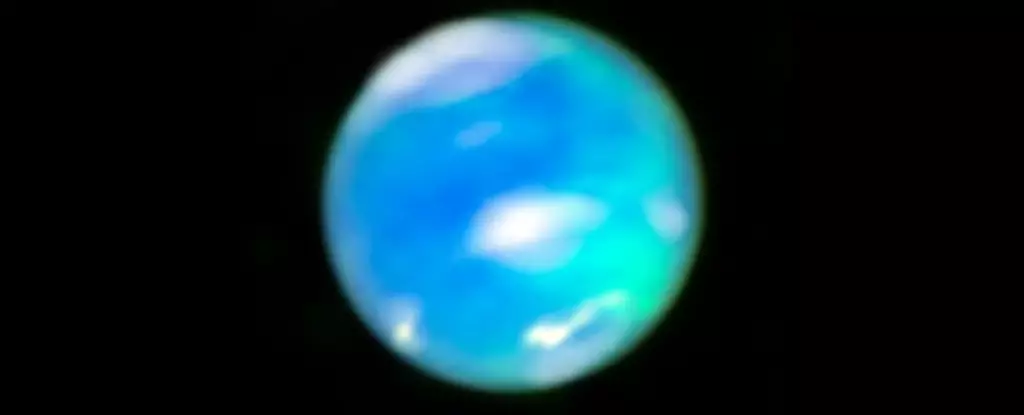In a groundbreaking development for planetary science, the groundbreaking capabilities of the James Webb Space Telescope (JWST) have unveiled the auroras of Neptune, an astounding feat that deepens our understanding of the atmospheric dynamics of this distant gas giant. For the first time, we see the sky-blue planet adorned with the shimmering colors of its auroras, a phenomenon that has long eluded astronomers. Neptune, situated at the fringes of our solar system, has now officially joined the ranks of other planets known for their magnetic spectacles. This discovery is not merely a remarkable achievement in imaging technology, but also a lever for understanding the interactions between solar winds and planetary environments, even in the most remote locations.
A Journey Through Aurora Styles
The varied auroras of our solar system hint at a complex interplay between each planet’s unique atmospheric and magnetic attributes. Earth’s auroras, a dazzling dance of colors reminiscent of an artist’s palette, owe their beauty to charged particles colliding with Earth’s magnetic shield, resulting in radiant displays that captivate anyone fortunate enough to witness them. In contrast, Jupiter showcases the most powerful auroras in our celestial neighborhood, emanating as constant, vibrant ultraviolet light from its tumultuous atmosphere. Interestingly, the gas giant’s four largest moons display auroras as well, reiterating how this phenomenon extends far beyond the planets themselves.
Mars and Saturn, too, present their unique auroral displays, exhibiting how different environmental conditions lead to diverse manifestations of a similar phenomenon. Meanwhile, Venus dazzles with green auroras akin to Earth’s, yet Mercury’s approach is downright peculiar: lacking any substantial atmosphere, it showcases auroras primarily through X-ray emissions triggered by mineral interactions. Such variability reflects the multifaceted nature of solar and planetary interactions, allowing astronomers to appreciate the complexity of the solar system’s atmospheric phenomena.
Neptune’s Uncharted Atmospheric Landscape
The new findings surrounding Neptune’s auroras have necessitated a reassessment of former understandings, particularly regarding the geographical locations of these atmospheric phenomena. Unlike Earth, where solar particles channel towards the poles, Neptune’s lopsided magnetic field directs these interactions towards the equator. This unconventional behavior underscores the uniqueness of Neptune’s atmospheric layout and expands our understanding of magnetospheric dynamics in celestial bodies separated by vast distances from the Sun.
In analyzing data from JWST, astronomers led by Henrik Melin utilized sophisticated spectrometry to identify trihydrogen cations (H3+), positively charged ions linked to auroral activities. Mapping these ions enables a closer examination of how solar particles are absorbed into Neptune’s atmosphere. This research represents a dramatic leap forward in observational astronomy, providing essential insights for astrobiology and the potential for understanding exoplanetary systems.
The Cool Mystery of Neptune’s Aurora
A particularly captivating aspect of this discovery is connected to the problem of temperature discrepancies noted in previous missions to Neptune, especially those carried out by Voyager 2. Initial assessments indicated much warmer conditions than those encountered by JWST. Such confusion has implications for various scientific approaches, rendering earlier hypotheses regarding Neptune’s atmospheric behavior somewhat misguided. The cooler temperatures discovered by JWST suggest that Neptune’s auroras are fainter than initially expected, elucidating why they remained hidden for so long. The recalibration of temperature assessments alters our interpretations, placing us on fresher analytical ground for exploring not only Neptune but other similarly distant worlds.
A New Lens on Cosmic Phenomena
The revelation of Neptune’s auroras not only rounds out our understanding of the solar system but also paves the way for fresh inquiries into exoplanetary atmospheres located around distant stars. This major discovery reaffirms the idea that auroras might be an inherent trait of planetary systems regardless of their location. By studying these interactions and their variations, we gain invaluable insights into the conditions necessary for sustaining fundamental forces such as magnetism and solar energy.
Overall, the hunt for understanding Neptune’s auroras signifies how much more there is to learn about our solar neighborhood. As this celestial body’s mysteries unfold through remarkable technological advancements, we enter an exciting era of astronomical exploration that invites us to look beyond our world and grasp the intricacies of our universe—a universe teeming with wonder.


Leave a Reply